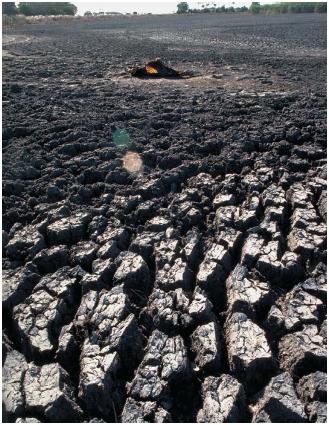By JC BELLO RUIZ (Manila Bulletin)
February 7, 2010, 5:46pm
Fourteen provinces are reeling under dry spell conditions based on rainfall observation conducted in January, according to the state-run Philippine Atmospheric, Geophysical and Astronomical Services Administration.
In its latest El Niño bulletin (Advisory No. 6), PAGASA said the dry spell areas are mostly in Luzon, and the rest in the Visayas. These are the provinces of Benguet, Batanes, Cagayan, Isabela, Nueva Vizcaya, Bulacan, Nueva Ecija, Pampanga, Batangas, Iloilo, Antique, Guimaras ,and Negros Occidental.
Some areas of Capiz province are also experiencing drought conditions, the weather bureau said.
“Ang mga nararamdaman natin na may kainitan na ay mga senyales na magtatag-araw na at kapag nagpatuloy ito ay mahaba ang panahon ng tag-araw dahil sa El Niño na umiiral sa bansa,” said Robert Sawi, chief of PAGASA's weather forecasting section.
Field reports gathered by the Bulletin also showed that many areas have been experiencing low water supply due to the persistent abnormal low rainfall conditions, prompting government agencies particularly the Department of Agriculture to map out contingency plans to mitigate its effects on the critical sector.
Even Malacañang last week appealed to the public to conserve water in the face of the problem.
In its previous El Niño bulletin (Advisory No. 5), PAGASA’s list of drought-hit areas included Aurora, Quezon, Marinduque, Mindoro, Romblon, Sorsogon, Camarines Norte, Camarines Sur, Northern Samar, Aklan, Guimaras, Biliran, Davao del Sur, South Cotabato, Sarangani and Sultan Kudarat.
“Overall assessment of rainfall for the month of January was below to way below normal in most areas of Luzon and Region VI (Western Visayas). Near normal condition was observed in Regions IV-B (Mimaropa), Bicol Region, Central Visayas, Northern Samar, and Central Mindanao. The rest of the Visayas and Mindanao have received above normal rainfall,” PAGASA said.
“Prevalence of the northeast monsoon affected the eastern portions of Visayas and Mindanao that brought rain for several days and eased down the dry spell conditions experienced over the affected areas during the month of December,” PAGASA added.
“
El Niño,” Spanish for “The Child”, is a weather phenomenon associated with the unusual warming in the Equatorial Pacific which usually brings below normal rainfall. It usually occurs around Christmas time or December, thus the name.According to PAGASA, “the El Niño in the equatorial Pacific continues to sustain its moderate strength and is recently in its mature stage.”
“Gradual decrease in sea surface temperature is expected but still within the El Niño threshold and likely to last up to June 2010.”
For February, the weather bureau said rainfall “will likely be below normal over most parts of the country except for some areas in the Cordillera Administrative Region (CAR), Ilocos Region, Cagayan, eastern part of Mindanao where near normal rainfall is expected. The rest of the country will likely experience way below normal rainfall condition,” PAGASA said.
Meanwhile, PAGASA Director Dr. Prisco Nilo said cold air temperatures brought about by the northeast monsoon would still last until February.
“But gradually air temperature is increasing,” Nilo said.
It would be recalled that before the onset of El Niño in January, persistent occurrence of the inter-tropical convergence zone (ITCZ) over the southern portion of the country caused continuous heavy rains affecting the Caraga Region, even triggering flooding and landslides in the provinces of Agusan del Norte, Agusan del Sur, Surigao del Norte and Dinagat.
Heavy rains caused by the northeast monsoon on the other hand resulted to flashfloods in Oriental Mindoro last Jan. 17.







0 Responses:
Post a Comment